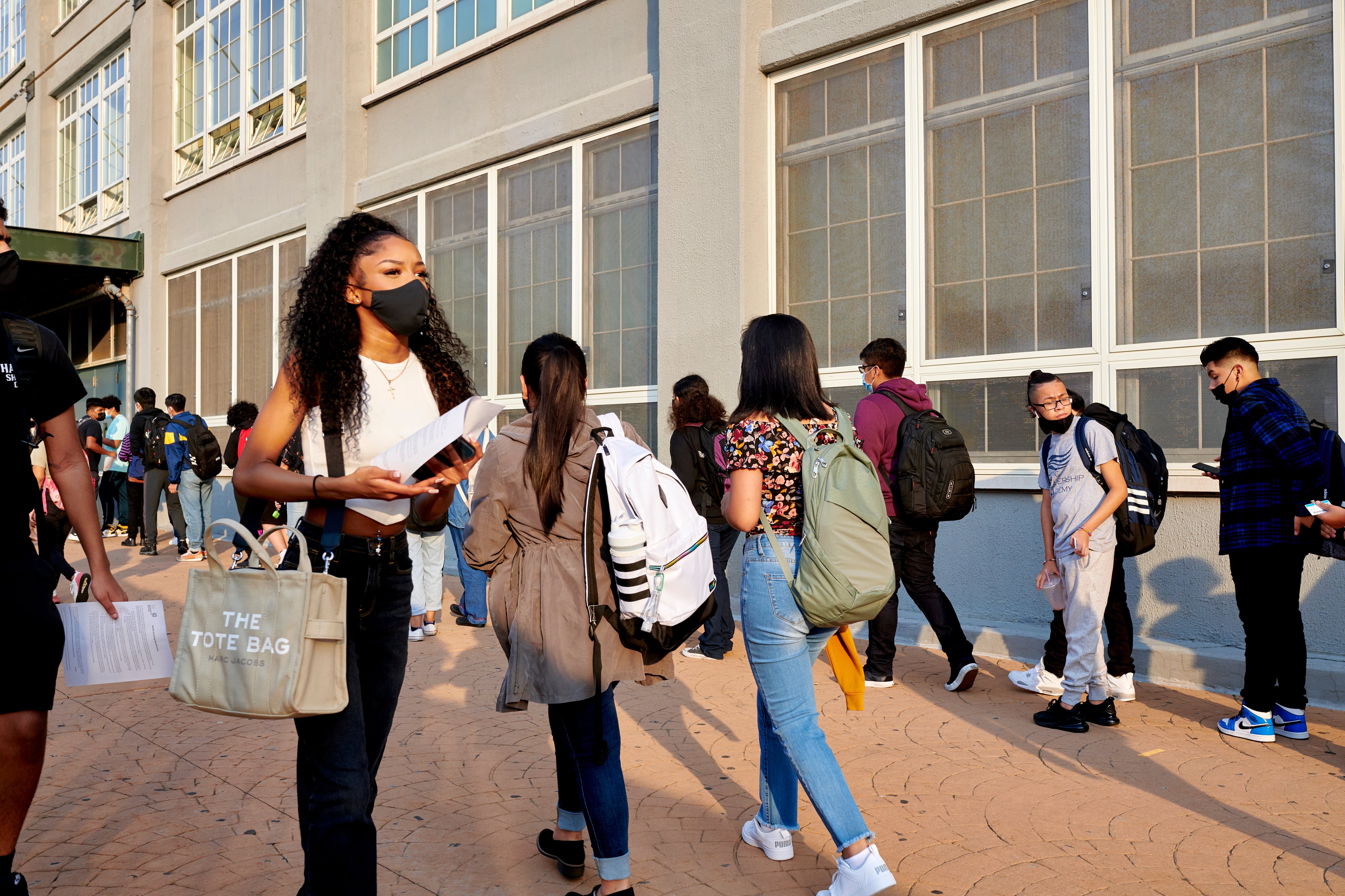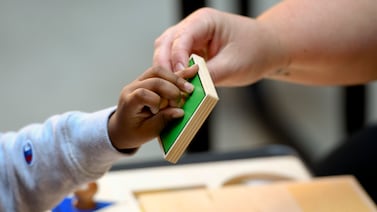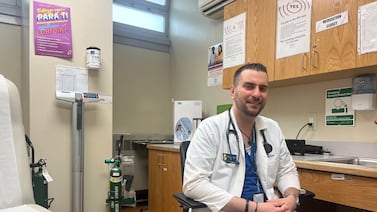Larger classes. Fewer opportunities for music and art. Not enough counselors to address students’ emotional toll. Too much time learning on computers even when in the classroom.
These are some of the concerns on the minds of educators and parents as New York City students return on Thursday, marking the first full year with Mayor Eric Adams and Chancellor David Banks helming the nation’s largest school district.
Many educators and families are heading into the year frustrated by the back-and-forth over budget cuts, with the majority of schools’ budgets slashed this year, forcing schools to cut staffers and other programs even as the city still has more than $1 billion in relief funds to spend this year.
Many are also looking forward to going on class trips once again. They’re hopeful that a renewed focus on literacy will help more children learn to read. And they’re looking forward to the new year with fewer disruptions than the previous COVID-dominated three years.
But some educators are already starting off the year feeling burned out after trying to teach through the pandemic.
“This year is expected to feel more like a ‘normal’ school year. Yet I don’t think teachers are ready, emotionally,” said kindergarten teacher Jeffrey Catano of P.S. 280 in Queens. “I love my job and come to work everyday with a smile, yet I feel undervalued by my city and the [education department] as a whole.”
Here’s what we’ll be watching this year:
Who will show up?
New York City’s public school enrollment in kindergarten through 12th grade (excluding charters) declined 9.5% since the pandemic began, and officials are expecting 30,000 fewer K-12 students this fall compared to last year.
The schools with the greatest losses are those serving the city’s most and least affluent, a previous Chalkbeat analysis found. Schools with the greatest share of affluent families saw the greatest drop in enrollment, followed by schools serving the highest numbers of low-income families. Meanwhile, the city is also seeing an influx of thousands of asylum seekers, who may need intensive support.
On top of monitoring the larger enrollment trends, we will be looking at day-to-day attendance. Last year, chronic absenteeism was high, likely for a lot of reasons, including COVID-related quarantines (whether for children who tested positive or because of classmates in the first half of the school year), work-related obligations, or mental health reasons.
What’s happening with the budget?
With funding tied to enrollment, and rosters dropping, Adams shrank the amount of money sent to most schools this year, touching off a political firestorm.
Many educators are concerned about having fewer teachers, larger classes, and less enrichment. Because of budget cuts, Shakira Provasoli is moving from teaching science to leading a second grade class at the Manhattan School for Children.
“I don’t mind, and I love second grade, but it does affect the academic growth of the students at my school in terms of science,” she said.
The budget, however, is not a done deal, with a lawsuit challenging the budget approval process due back in appeals court on Sept. 29. (The city pushed back on a lower court’s decision to redo the education department’s budget.)
If schools end up getting money after the start of the year, the question remains: How will they be able to use it? School leaders who spoke to Chalkbeat said they would welcome more money, especially to hire staff, but doing that after the year begins can be tricky.
Additionally, the administration is fighting Albany legislation that would phase in class size caps through 2027, fearing it will cost too much to implement. Though Gov. Kathy Hochul hasn’t signed it yet, she has signaled her support.
How will schools address academic needs?
Budget cuts forced many New York City schools to let go of educators, but the academic needs remain high, especially for the lowest performing students. Math and reading scores for 9-year-olds from the National Assessment of Educational Progress, whose test is known as “the nation’s report card,” plummeted. It remains to be seen how the city will address this. (Scores for New York City students are expected in October.)
Hiring more staff, having high-dosage tutoring, and strong after-school programs are among the strategies the federal government hopes districts will spend stimulus money on.
Already, however, the city is scaling back its academic recovery program for students with disabilities, many of whom struggled significantly with remote learning. Last school year, city schools were responsible for providing additional support after school or on Saturdays to all students with individualized education programs, or IEPs. The program was slow to get off the ground, however, hitting roadblocks on recruiting educators as well as signing up families. The majority of eligible students did not participate. This year, the city is putting more of the onus on families to advocate for additional support for their children with disabilities.
Manhattan mom Lisa Brassell moved her first grader, who is on the autism spectrum, from his traditional public school to a charter this year due to the lack of support for students with disabilities.
“My son really hated school last year because the teachers didn’t provide proper supports,” she said. “I hope his new school is able to help him like school again.”
How will schools address mental health?
“Students are emotionally fragile,” Provasoli, from the Manhattan School for Children, said.
Last year, the city implemented a social skills screening tool as one way to address mental health needs. The questionnaire, which is expected to be used again, is meant to assess students’ decision-making skills, self-awareness, and taking personal responsibility, for instance. Many educators said they didn’t feel equipped to assess students on these skills, but some schools that have been using them for years — and have had a lot of support around using the data — have been able to use the assessments to shift their schools’ culture.
The city has roughly 5,000 social workers and guidance counselors for its nearly 900,000 students, with at least one social worker or clinician from a school-based mental health clinic in every school. But many educators say their schools need more mental health resources.
“We have excellent counselors that have been at our school for many years. Yet there are only two for 700 students and much of their time is (rightly) taken by IEP mandates,” said Tom Griffith, a sixth grade teacher at Brooklyn Collaborative Studies, a middle and high school.
The school is fortunate to have three “invaluable” counselor interns and an administration focused on empathy-building, he said. It’s still not enough.
“We need more money for more support in this area,” he said. “The pandemic continues to weigh heavily on our whole community. The students are anxious, staff is dealing with personal trauma, and COVID lurks in the background still.”
How will COVID impact schools this year?
Schools are ditching most of the city’s COVID mitigations this year. Say goodbye to the daily health screeners and onsite PCR testing. Continue to expect take-home rapid tests. Masking and quarantines were already dropped last year. One thing that remains, however, are COVID vaccine requirements for staff and visitors, as well as students participating in sports or extracurriculars.
The city is continuing to report COVID cases in communities. On Tuesday, for instance, 148 cases were reported among students and staffers. (Students at many charters have already returned.)
Beth Kopelowitz, who works with students in various classes as an English as a new language teacher at Brooklyn’s P.S. 215, said she still doesn’t feel safe because of the coronavirus.
“I will probably still wear a mask in the classrooms,” she said.
What about literacy and other instructional changes in the classroom?
Adams is pushing to overhaul literacy instruction in New York City schools, calling for more phonics in the early grades and implementing screening tools for students up to 10th grade to catch students with print-based challenges. Whether educators have enough support and training to implement the changes successfully remains to be seen, especially as some educators said their schools have cut reading specialists because of budget cuts.
The Adams administration also created its first virtual schools this year, opening them up only for ninth grade students to start. Adams and Banks have put their weight behind some other initiatives, including expanding career and technical education programs and adding “gifted and talented” seats, signaling less interest in tackling integration in one of the nation’s most segregated districts.
Meanwhile, Adams and Banks have spent a lot of their time and political capital on reorganizing the education department bureaucracy, requiring district superintendents to reapply for their jobs in a process that attracted some backlash. In the latest game of musical chairs, the city is moving about 1,000 staffers from central and borough offices to district offices.
Amy Zimmer is the bureau chief for Chalkbeat New York. Contact Amy at azimmer@chalkbeat.org.






